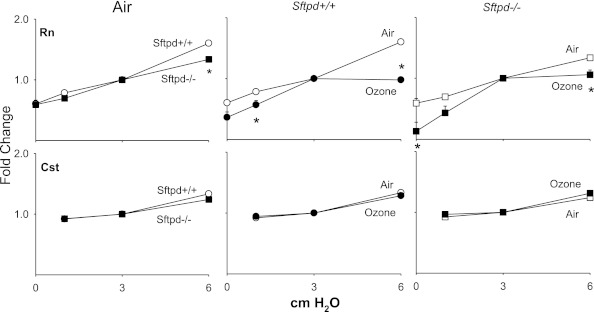Figure 4.
Effects of ozone inhalation on central airway resistance (Rn) and static compliance (Cst) in Sftpd+/+ and Sftpd−/− mice. Lung function was measured 72 hours after exposure of Sftpd+/+ (circles) and Sftpd−/− (squares) mice to air (open symbols) or ozone (solid symbols). Lungs were subjected to increasing positive end-expiratory pressure (PEEP). Top row: For Rn, impedance spectra were measured using the forced oscillation technique. Results were analyzed using the constant phase model. Bottom row: Cst was calculated from pressure–volume loops. Measurements were performed in triplicate at each PEEP. For each sample at each PEEP, Rn and Cst values were normalized to PEEP = 3, the physiological pressure for mice. Each point represents the mean ± SEM of three experiments (n = 4–6 mice/treatment group/experiment; n = 12–27 mice/group total). Data were analyzed by two-way ANOVA and a nonpaired, two-tailed Student t test. *Significantly different (P ≤ 0.05) from air-exposed or Sftpd+/+ control mice.

